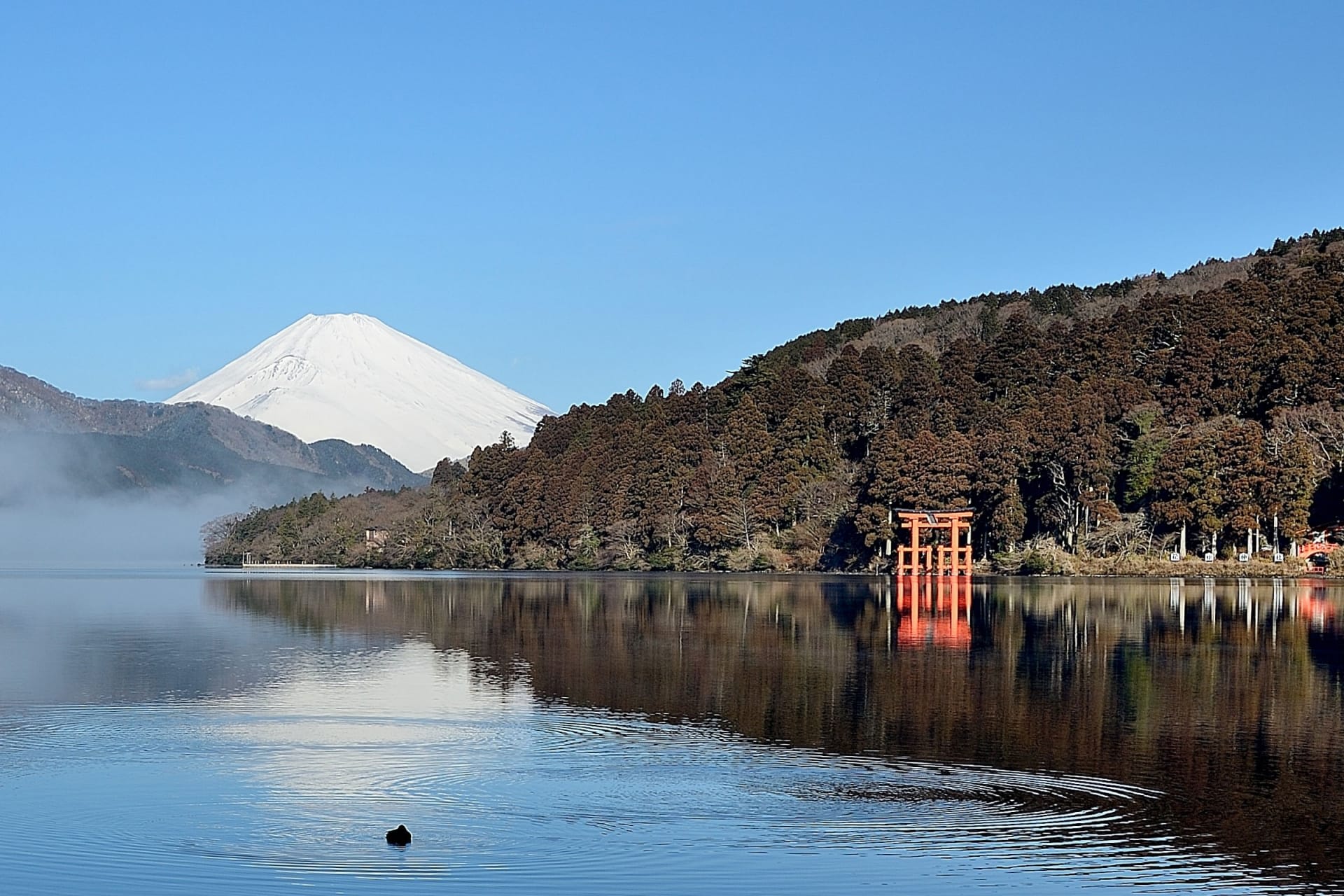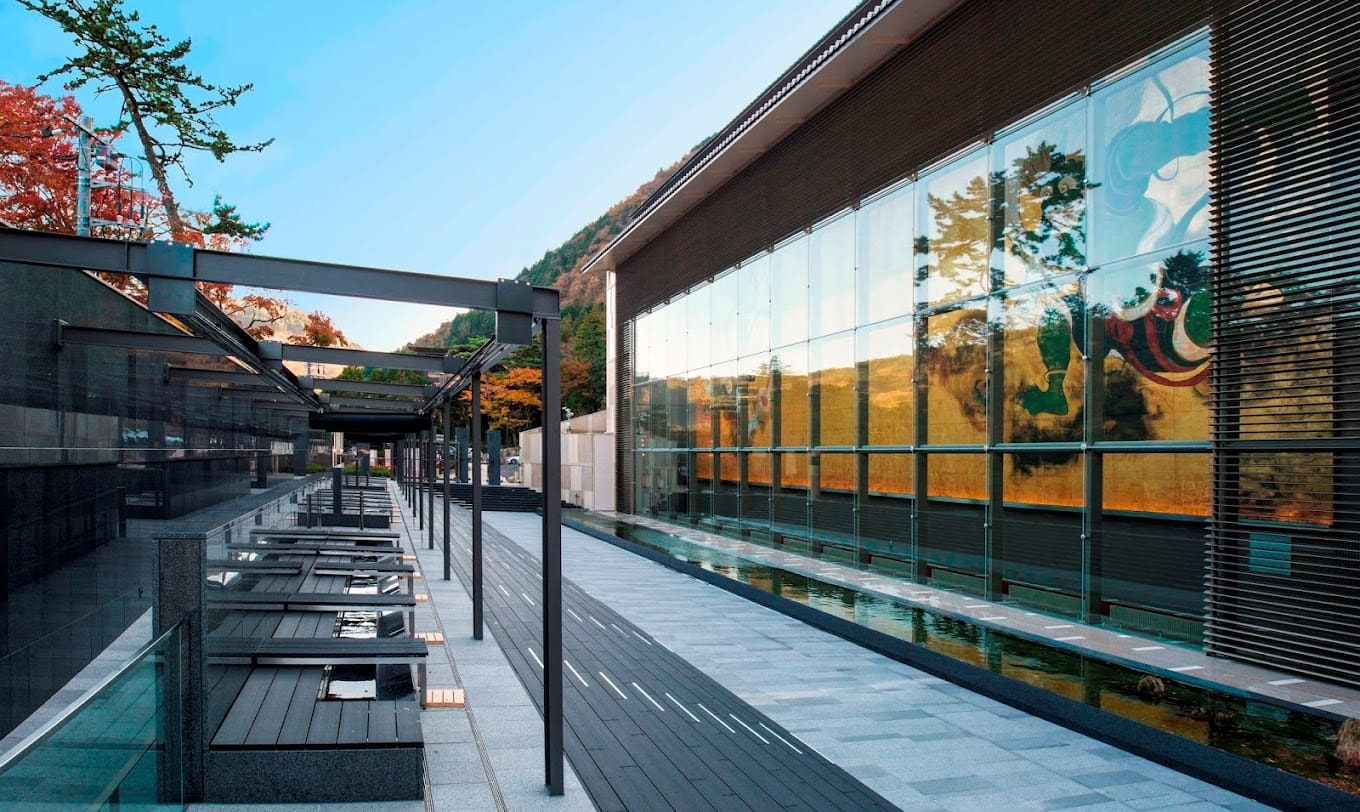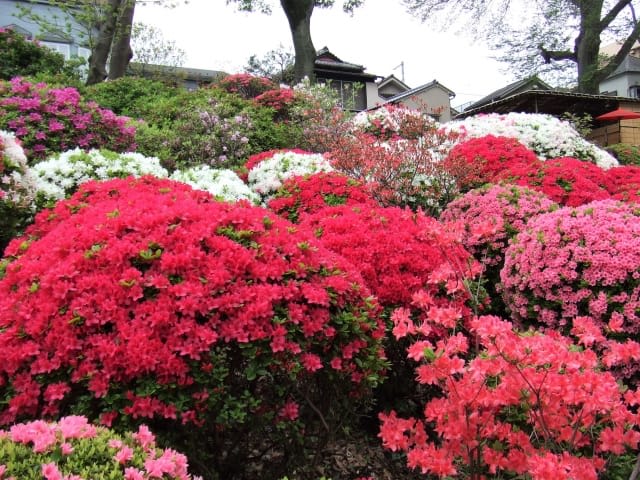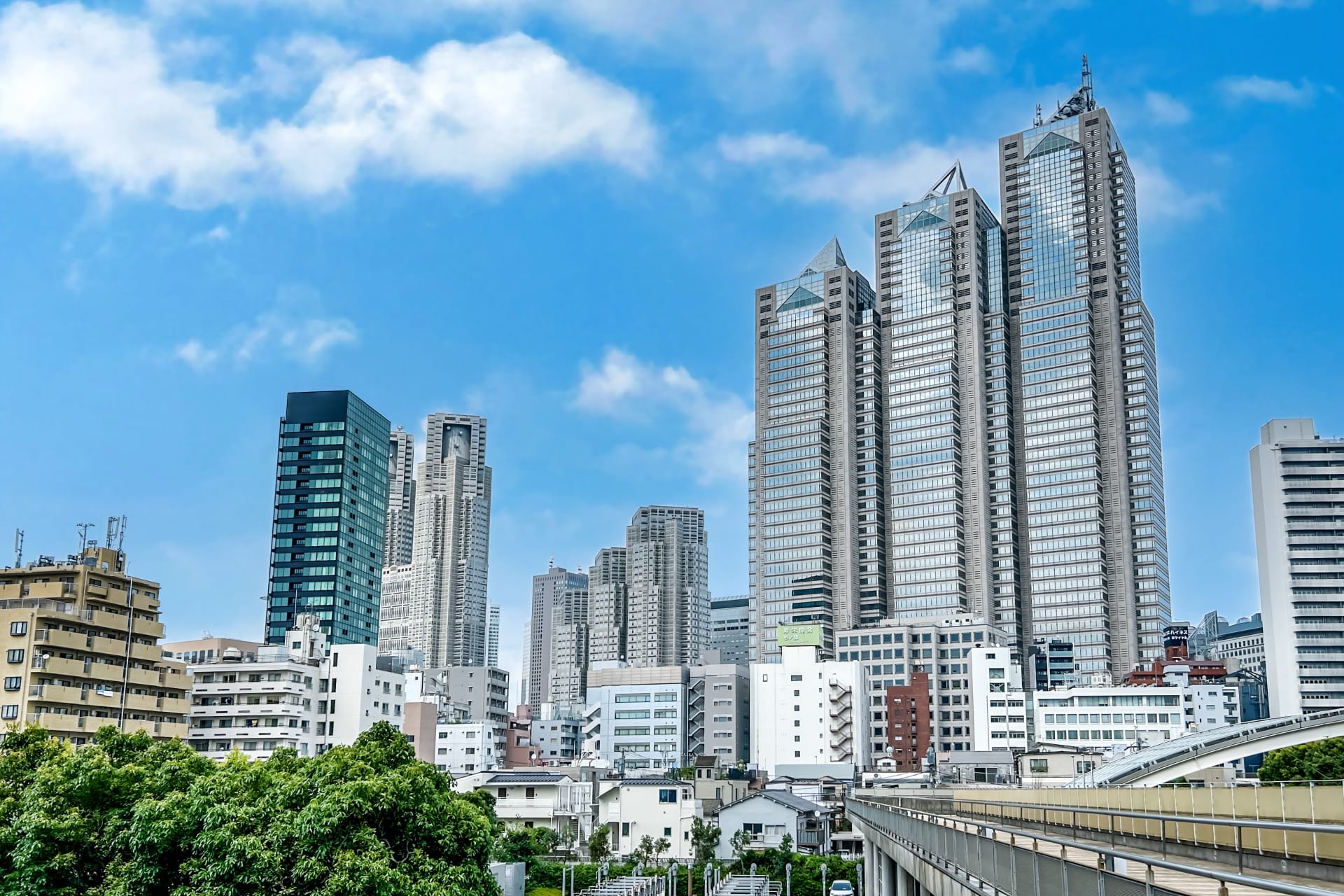Hakone 2025: Must-Visit Attractions for International Tourists w/map
Hakone is a special place where I always encounter new discoveries and emotions, no matter how many times I visit. Despite being only about 90 minutes from Tokyo, its majestic nature, hot springs, and world-class museums offer an experience that feels like a journey to another world.
Lake Ashi, which shows different expressions with each season, the steaming Owakudani, and on clear days, the spectacular view of Mt. Fuji - it's all here. Indeed, weekends can be crowded with tourists, and popular spots can get busy, but this only speaks to the multitude of people attracted to Hakone's charms.
In Hakone, the good old atmosphere of hot spring towns that have continued since the Edo period harmonizes with contemporary art. It seems that both locals and tourists have their own "favorite Hakone."
I recommend early morning walks to avoid crowds, and gazing at the starry sky in the quiet Sengokuhara area is also exceptional. The more time you spend in museums and hot springs, the deeper Hakone's charm seeps into your heart.
In this article, I'd like to introduce the profound charms of Hakone from my perspective as someone who has visited Hakone many times.
Throughout Japan, including Hakone, Magical Trip offers guided tours where you can explore local history, traditions, and food culture in depth with local guides.(Hakone Full Day Chartered Private Tour: Art & Nature)
Our most popular tour "Tokyo Bar Hopping Night Tour in Shinjuku" was ranked as Tripadvisor's #1 tour in 2024.

For tourists visiting Tokyo, why not try a private car tour that lets you efficiently visit multiple attractions in a single day? With expert guides who know all the best spots, you can fully experience the region's traditions and rich food culture even in just one day.
These tours include hotel pickup and drop-off service, allowing you to visit attractions stress-free and efficiently. If you're interested in nature-rich destinations like Hakone and want to explore Japan's history and traditions while avoiding crowds, these tours are perfect for you.
・Hakone Full Day Chartered Private Tour: Art & Nature
・Mt. Fuji Full-day Nature Guided Tour with a Private Chartered Car & Guide
Table of Contents
・The Appeal of Hakone
・How to Access Hakone from Tokyo
・Must-See Tourist Attractions in Hakone
・Frequently Asked Questions about Hakone's Attractions
The Appeal of Hakone
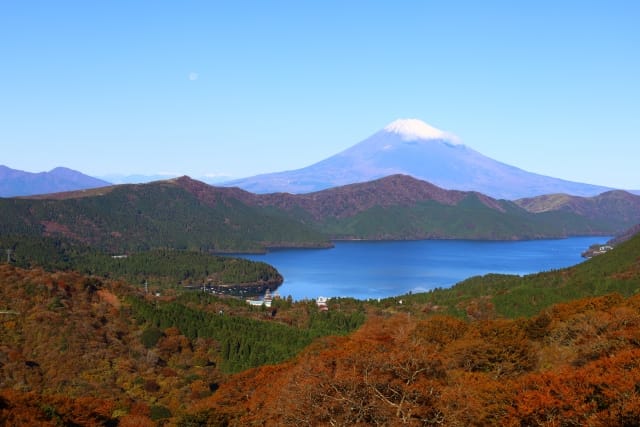
The appeal of Hakone lies in its diversity. It's a place where you can have an experience that feels like a different world, surprisingly close at just 90 minutes from Tokyo. It shows different expressions in each season - cherry blossoms in spring, a cool summer retreat, autumn foliage viewing, and snow-viewing hot springs in winter.
Hot springs are undoubtedly Hakone's greatest attraction. The hot spring town, which has been popular since the Edo period, is lined with long-established inns that exude historical weight, while modern hot spring resort hotels are also abundant.
Moreover, Hakone is known worldwide as a town of art. World-class museums such as the Hakone Open-Air Museum and the Okada Museum of Art are scattered throughout, allowing visitors to experience the fusion of nature and art.
The view of Mt. Fuji on clear days is truly spectacular. The views of Mt. Fuji from Lake Ashi and Owakudani, each showing different expressions, continue to fascinate visitors.
How to Access Hakone from Tokyo

There are various ways to access Hakone, which can be chosen according to your travel purpose and budget.
I particularly recommend the Romance Car, which connects Shinjuku to Hakone-Yumoto in about 85 minutes. You can enjoy a comfortable train journey while admiring the view from the large windows.
Another popular route is combining the Tokaido Shinkansen and the Hakone Tozan Railway. It takes about 30 minutes from Tokyo Station to Odawara by Shinkansen, then about 15 minutes to Hakone-Yumoto on the Hakone Tozan Railway. The view from the train slowly climbing the mountain road is exceptional.
For those who want to keep their budget low, I recommend the highway bus. It takes about 120 minutes from Shinjuku, but the fare is reasonable. The seats are comfortable, and if there's no traffic jam, you'll arrive in Hakone while sleeping.
Accessing by rental car is also convenient. It takes about 90 minutes from Tokyo, and you can freely tour various parts of Hakone. However, be cautious of mountain roads and traffic jams during tourist seasons.
Also, for those who are uneasy about Japanese or want to tour efficiently, I recommend guided tours. Many English-speaking tours departing from Tokyo are available.
Must-See Tourist Attractions in Hakone
Hakone is dotted with numerous attractions, including hot springs, museums, and natural spots. Each area has its own charm, and I recommend taking your time to tour them.
Hot Spring Areas
Hakone has four main hot spring areas, each with a different atmosphere and characteristics. Your choice of area can greatly change your experience in Hakone.
Hakone-Yumoto
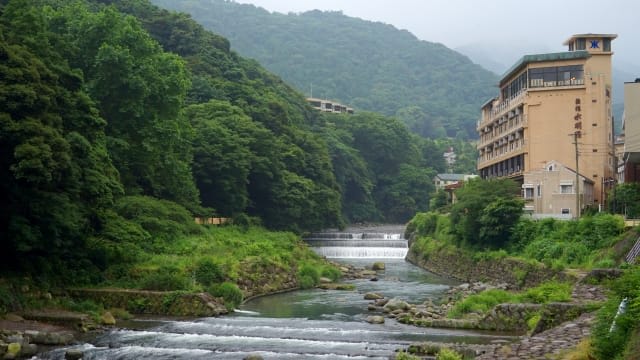
Hakone-Yumoto, the gateway to Hakone, is an area where the hot spring culture from the Edo period still strongly remains. Long-established inns line the stone-paved streets, allowing you to enjoy the atmospheric hot spring town.
What I particularly like is taking a walk in the hot spring town early in the morning. Walking while seeing the hot spring steam rising in the morning mist is truly a luxurious experience unique to hot spring areas.
Souvenir shops are also plentiful, with many stores selling Hakone's traditional crafts and local specialties. There are also numerous day-trip hot spring facilities, allowing you to casually enjoy Hakone's hot springs.
Gora

Gora, with its high altitude and particularly good views in Hakone, is a hot spring resort area where modernity and tradition are beautifully harmonized.
What I particularly like is the access method using the Hakone Tozan Railway, famous as a mountain climbing train, and the cable car. The view from the window as you slowly climb the steep slope is truly a unique Hakone experience.
Gora Park is known as a Japanese garden where you can enjoy flowers in all four seasons. I especially recommend the traditional craft experience programs. The cut glass creation experience provides a valuable opportunity to touch Japanese traditional culture.
Sengokuhara

Sengokuhara is a hot spring area in Hakone that is particularly rich in nature. In autumn, the vast pampas grass field that spreads out is known as a spectacular spot representing Japan's autumn scenery. The reason I particularly like this place is the complete silence, cut off from the hustle and bustle of the city.
Sengokuhara, where luxury resort hotels are scattered, is especially recommended for those seeking a stay in a high-quality hot spring inn. Well-maintained hiking courses are also available in the surrounding area, allowing you to fully enjoy hot springs and nature. As there are few streetlights at night, it's also suitable for stargazing.
Kowakidani

Kowakidani is known as an authentic hot spring area where the scent of sulfur wafts through the air. What I find particularly impressive is the hot spring steam rising everywhere. From the open-air baths in this area, you can enjoy a panoramic view of Hakone's mountains, offering a bathing experience in truly spectacular scenery.
The specialty of this area is onsen eggs. The black eggs boiled in geothermal heat are known for their shells turning black. Also, as it's popular as a starting point for hiking courses, it's a recommended area for those who want to enjoy both nature and hot springs.
Museums and Art Galleries
Hakone is known worldwide as a place where nature and art harmonize beautifully. Here, I'll introduce some particularly impressive museums.
Hakone Open-Air Museum

This is a vast outdoor museum where you can enjoy contemporary art amidst nature in all four seasons. What I particularly like is the harmony between art and nature. The sight of works by world-renowned artists scattered in a space surrounded by greenery under the blue sky is breathtaking.
The Picasso Pavilion is one of the most popular facilities in this museum. You can see Picasso's valuable works up close, providing a precious opportunity to encounter world-class art.
There are also abundant hands-on exhibits for children, making it enjoyable for families. There are numerous photo spots throughout the museum, with attractive places set up in various locations that make you want to post on social media.
Website: https://www.hakone-oam.or.jp/en/
Okada Museum of Art
Source: Google Map
The Okada Museum of Art, one of the newest facilities among Hakone's museums, houses numerous masterpieces of Oriental art.
What I find particularly impressive is its architectural design and exhibition method. Ancient art pieces are beautifully harmonized within the modern building.
The Japanese garden of the museum shows different expressions in each season and is truly magnificent. What's particularly noteworthy is the presence of a foot bath cafe, where you can relax while viewing the garden between art appreciation sessions. Museum visitors can use the foot bath for free, so this is definitely a point I want you to experience.
Website: https://www.okada-museum.com/en/
Hakone Venetian Glass Museum

The Hakone Venetian Glass Museum is an art museum that exhibits authentic Venetian glass crafts. What moves me every time I visit is the beauty of the Crystal Garden shimmering in the light. As soon as you step inside the museum, you're enveloped in an atmosphere that makes you feel as if you've traveled to Venice, Italy.
The seasonal illuminations are a must-see. At dusk, countless glass works emit fantastical light, enchanting visitors. Also, the museum shop sells glass crafts, allowing you to acquire beautiful pieces as mementos of Hakone.
Website: https://www.hakone-garasunomori.jp/en/
Natural Attractions
The charm of Hakone also lies in its rich nature. The natural landscapes that show different expressions in each season heal the hearts of visitors and give them deep emotions. I'll introduce some particularly impressive natural attractions.
Lake Ashi
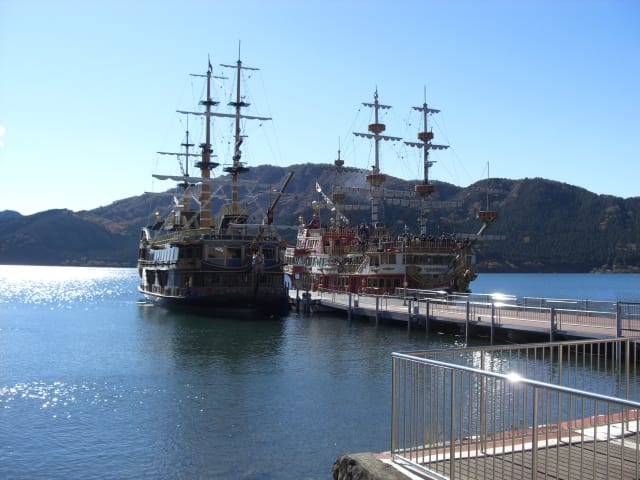
Lake Ashi, a representative tourist attraction of Hakone, is known worldwide as a spectacular viewpoint of Mt. Fuji.
I recommend the view from the sightseeing boats. Especially on the popular pirate ship cruise, you can have a panoramic view of Mt. Fuji and the mountains of Hakone from the lake. On clear days, you can also enjoy the reflection of Mt. Fuji on the surface of the lake.
Attractive cafes are scattered along the lakeshore, where you can spend a relaxing time. There's also a well-maintained cycling road that goes around the lake, allowing you to fully enjoy Hakone's nature by bicycle.
Owakudani
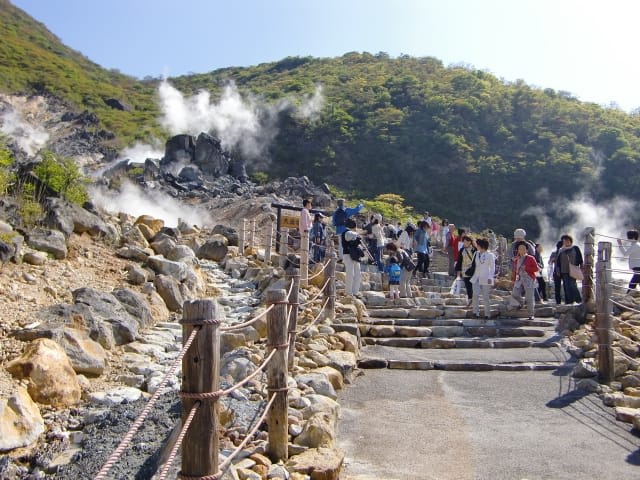
Owakudani is a special place where you can experience the active volcanic activity of Hakone Volcano up close.
Every time I visit, I'm overwhelmed by the powerful sight of the fumaroles that make you feel the breath of the Earth. The "black eggs" that are a specialty of this area are characterized by their shells turning black when boiled in hot spring steam, and their popularity is also due to the legend that eating one extends your life by seven years.
From the observation deck, you can see not only the majestic mountains of Hakone but also Mt. Fuji on clear days. The otherworldly scenery with the scent of sulfur wafting through the air is a unique Hakone experience.
Cedar Avenue of Old Hakone Highway
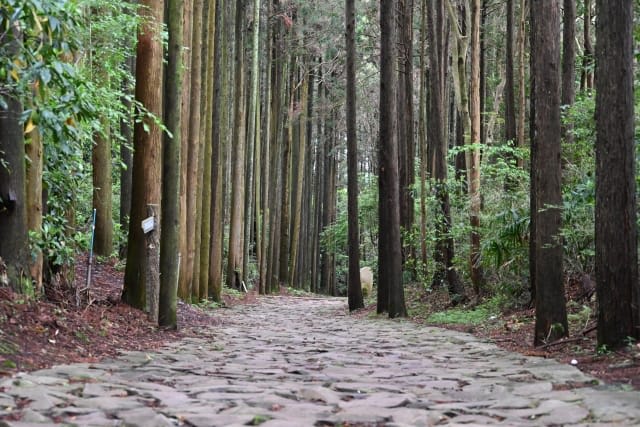
The Cedar Avenue of the Old Hakone Highway is a historic walking path that conveys the atmosphere of the Edo period to the present day. What particularly impresses me is the grandeur of over 400 giant cedar trees, some over 300 years old, that still remain. Walking along the old highway where stone pavements remain, you can imagine the footsteps of travelers from the past.
Walking this path makes you feel as if you've wandered into the world of a period drama. During the Edo period, this road was known as a difficult part of the Tokaido route, and many travelers passed through this historic road. Walking through the quiet cedar avenue provides a valuable opportunity to experience Japanese history and culture.
Frequently Asked Questions about Hakone's Attractions
I'll answer in detail some commonly asked questions when visiting Hakone, drawing from my own experiences.
When is the Best Season to Visit?

While Hakone's charms can be enjoyed throughout the year, I particularly recommend the autumn foliage season from October to November. The mountains are dyed in red and yellow, and the combination of hot springs and autumn leaves provides an exceptional experience. However, as this is the busiest tourist season, I recommend making accommodation reservations early if you plan to stay overnight.
Spring, from March to April, is also a popular season. Cherry blossoms bloom in various parts of Hakone mountain, allowing you to enjoy the atmosphere of hot springs and cherry blossoms simultaneously.
In summer, many people visit to escape the heat, seeking the coolness unique to Hakone's high altitude. In winter, the view of Mt. Fuji is particularly beautiful in the clear air, and the combination of snow scenery and hot springs is also attractive.
Is a Day Trip Possible?
A day trip to Hakone is certainly possible, but from my experience, I strongly recommend staying overnight to fully enjoy the hot springs.
If you're visiting for a day trip, it's best to depart early in the morning and efficiently tour the tourist spots. Using the Hakone Free Pass or participating in a guided tour are secrets to efficient sightseeing.
There are many day-trip bathing facilities in the Hakone-Yumoto area where you can casually enjoy hot springs. If you use the day-trip bathing plans of famous ryokans, you can also have an authentic hot spring experience.
How Much Budget is Needed?
In my experience, the budget for a Hakone trip varies greatly depending on your style of stay. For a day trip, it's safe to budget around 10,000 yen per person, including transportation costs, meals, and admission fees.
For a one-night, two-day trip, it varies greatly depending on the grade of accommodation. It's about 30,000-50,000 yen per person for general ryokans and hotels, and it can be over 50,000 yen per night per person for high-class ryokans. Museum admission fees average around 2,000 yen. I recommend making a budget plan with some leeway, including souvenirs and dining expenses.
Is English Spoken?
Major tourist facilities in Hakone have English guidance signs. Especially in luxury hotels, English-speaking staff are usually available, so you can stay with peace of mind.
However, in general restaurants, English menus may be limited, or communication in English might be difficult. I recommend having a smartphone translation app ready. Using the image translation function, you can easily understand the contents of menus.
What's the Recommended Sightseeing Route?
From my experience, I'll introduce the most efficient and attractive sightseeing route for Hakone. For a one-night, two-day trip, I recommend the following route:
On the first day, start from Hakone-Yumoto and take the mountain railway to Owakudani. After enjoying the famous black eggs at Owakudani, head to Lake Ashi by ropeway. At Lake Ashi, ride the sightseeing boat (pirate ship) and enjoy the spectacular view from the lake. It's best to return to your accommodation in the evening and leisurely enjoy the hot springs.
On the second day, after enjoying the morning hot spring, I recommend visiting museums in the Gora area. After visiting museums with many attractions such as the Hakone Open-Air Museum and the Okada Museum of Art, stroll around the streets of Gora.
Using the Hakone Free Pass allows you to use various transportation means in Hakone, such as ropeways, cable cars, and sightseeing boats, at a reasonable price. I strongly recommend using this Free Pass, especially for those visiting Hakone for the first time.
Website: https://www.hakonenavi.jp/international/en/discount_passes/free_pass
Hakone is a special place where Japanese hot spring culture, art, and natural beauty are beautifully harmonized. It's an attractive tourist destination where you can have an otherworldly experience despite being just 90 minutes from Tokyo.
Just as I make new discoveries every time I visit, Hakone has endless charms. Nature that shows different expressions in each season, world-class museums, and above all, hot springs that heal both mind and body. It's because these elements coexist in perfect balance that many tourists from around the world visit.
While the best season for sightseeing is autumn with its fall foliage, each season has its own unique charm. English support is gradually being improved, allowing foreign tourists to visit with peace of mind.
I recommend using the Hakone Free Pass to efficiently tour the tourist spots, but sometimes it's good to not rush and slowly savor the air of Hakone. Gazing at the scenery of the mountains spreading outside the window while soaking in a hot spring - such a leisurely flow of time is Hakone's greatest charm.
I hope your trip to Hakone becomes a wonderful memory that stays in your heart!
